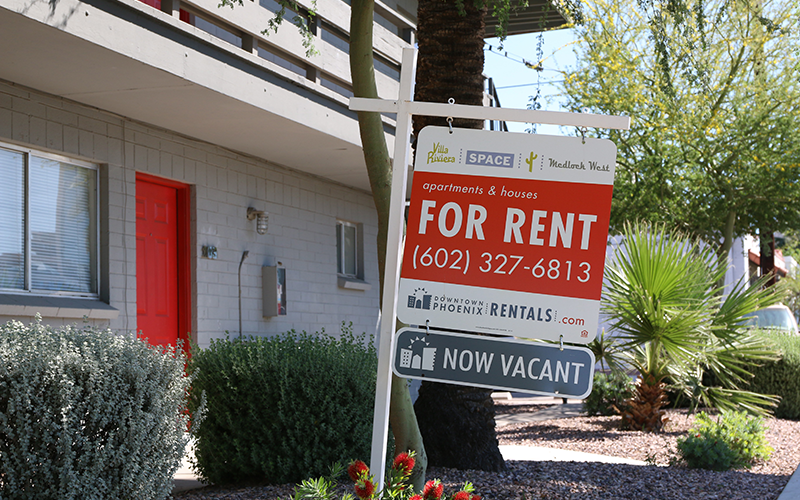
The number of renters in Arizona who fear they could be evicted in the next two months has risen sharply since September, when a pandemic-driven federal moratorium on evictions expired. (File photo by Carolina Lopez/Cronkite News)
WASHINGTON – The number of Arizonans fearing eviction has grown sharply since a pandemic moratorium on evictions ended in September, with advocates and landlords both saying rental assistance from the federal government has not reached renters fast enough.
The Census Household Pulse Survey said that 39% of Arizona renters it surveyed between the end of January and the beginning of February believed they were very likely or somewhat likely to be evicted within the next two months. That’s up from 25% in the first week of September.
This despite the fact that there are tens of millions in assistance still available to help renters out under the federal Emergency Rental Assistance Program. But federal red tape, combined with local agencies that were not prepared to disburse the money, means renters have not been able to access the funds.
“There’s just too much red tape and it’s really difficult for renters and for property owners to access the funds,” said Courtney LeVinus, the president and CEO of the Arizona Multihousing Association. “So we’re still experiencing significant wait times to get emergency rental assistance.”
That was reflected in the Census survey, which said that just 8% of those surveyed in Arizona had received rental assistance, while another 17% had applied but were still waiting for a response. Another 69% said they had not applied for help.
The Emergency Rental Assistance Program was established in 2020 with a $25 billion allocation, and was expanded in 2021 with another $21 billion as part of the American Rescue Plan.
Arizona was allocated $491 million but had awarded just under $58.9 million to renters as of Wednesday – even that was a vast improvement over the $18.6 million the state Department of Economic Security had distributed by September. That put the state at risk of losing some of its funding under Treasury Department guidelines that called for housing agencies to have distributed 30% of their funds by the end of September.
Local housing agencies had done a better job distributing their share of the funds – Maricopa County agencies had awarded 57% of their money by September, according to the National Low Income Housing Coalition – leading the state to transfer some its money to local agencies for distribution.
“In November 2021, while considering the disproportionate funding and demand in other jurisdictions, the Department voluntarily reallocated $88 million of its funding to other jurisdictions across the state,” DES spokesperson Tasya Peterson said in an emailed statement.
She said the state knew it would be a challenge to distribute funds across the state without assistance from local agencies.
But LeVinus said the program is still a challenge for renters and landlords.
In order to qualify for emergency rental assistance, renters must demonstrate a risk of homelessness, housing instability or unsafe living conditions, must have been impacted by the COVID-19 pandemic and have an income that is less than or equal to 80% of the area median income.
LeVinus said it can be time consuming and inaccessible for renters to prove they qualify for assistance, making it difficult to get funding when it’s needed.
Additionally, state and local agencies did not have infrastructure in place prior to the pandemic that would have ensured funds got into the hands of renters quickly, said Sonya Acosta, a policy analyst with the Center on Budget and Policy Priorities.
“It took a while to get all these things up and running, and that’s partly because there wasn’t any kind of housing safety net that was already in place for these places to build on,” Acosta said.
It was entirely new terrain for some agencies, she said.
“In a lot of places there is no emergency rental assistance program; if you fell behind on rent you looked to a church or a nonprofit organization for help, there wasn’t any infrastructure there,” Acosta said.
She said that advocacy groups are now more focused on building that infrastructure and working toward long-term assistance that would extend beyond the pandemic.
“(ERAP) is really helpful for families, but some families need longer-term assistance,” Acosta said. “It’s not just a one-month emergency, they could use rental assistance for two or three years, while they build up some more savings.”
Until then, LeVinus said local housing groups will continue to work to ensure the assistance process is smooth for renters and property owners to prevent evictions.
“What we’re focused on these days is trying to expedite that process, so that renters have the funds in their hands much sooner than they have experienced in the past,” she said.

